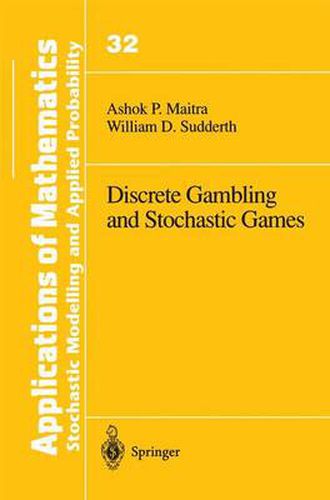Readings Newsletter
Become a Readings Member to make your shopping experience even easier.
Sign in or sign up for free!
You’re not far away from qualifying for FREE standard shipping within Australia
You’ve qualified for FREE standard shipping within Australia
The cart is loading…






This title is printed to order. This book may have been self-published. If so, we cannot guarantee the quality of the content. In the main most books will have gone through the editing process however some may not. We therefore suggest that you be aware of this before ordering this book. If in doubt check either the author or publisher’s details as we are unable to accept any returns unless they are faulty. Please contact us if you have any questions.
The theory of probability began in the seventeenth century with attempts to calculate the odds of winning in certain games of chance. However, it was not until the middle of the twentieth century that mathematicians de veloped general techniques for maximizing the chances of beating a casino or winning against an intelligent opponent. These methods of finding op timal strategies for a player are at the heart of the modern theories of stochastic control and stochastic games. There are numerous applications to engineering and the social sciences, but the liveliest intuition still comes from gambling. The now classic work How to Gamble If You Must: Inequalities for Stochastic Processes by Dubins and Savage (1965) uses gambling termi nology and examples to develop an elegant, deep, and quite general theory of discrete-time stochastic control. A gambler controls the stochastic pro cess of his or her successive fortunes by choosing which games to play and what bets to make.
$9.00 standard shipping within Australia
FREE standard shipping within Australia for orders over $100.00
Express & International shipping calculated at checkout
This title is printed to order. This book may have been self-published. If so, we cannot guarantee the quality of the content. In the main most books will have gone through the editing process however some may not. We therefore suggest that you be aware of this before ordering this book. If in doubt check either the author or publisher’s details as we are unable to accept any returns unless they are faulty. Please contact us if you have any questions.
The theory of probability began in the seventeenth century with attempts to calculate the odds of winning in certain games of chance. However, it was not until the middle of the twentieth century that mathematicians de veloped general techniques for maximizing the chances of beating a casino or winning against an intelligent opponent. These methods of finding op timal strategies for a player are at the heart of the modern theories of stochastic control and stochastic games. There are numerous applications to engineering and the social sciences, but the liveliest intuition still comes from gambling. The now classic work How to Gamble If You Must: Inequalities for Stochastic Processes by Dubins and Savage (1965) uses gambling termi nology and examples to develop an elegant, deep, and quite general theory of discrete-time stochastic control. A gambler controls the stochastic pro cess of his or her successive fortunes by choosing which games to play and what bets to make.